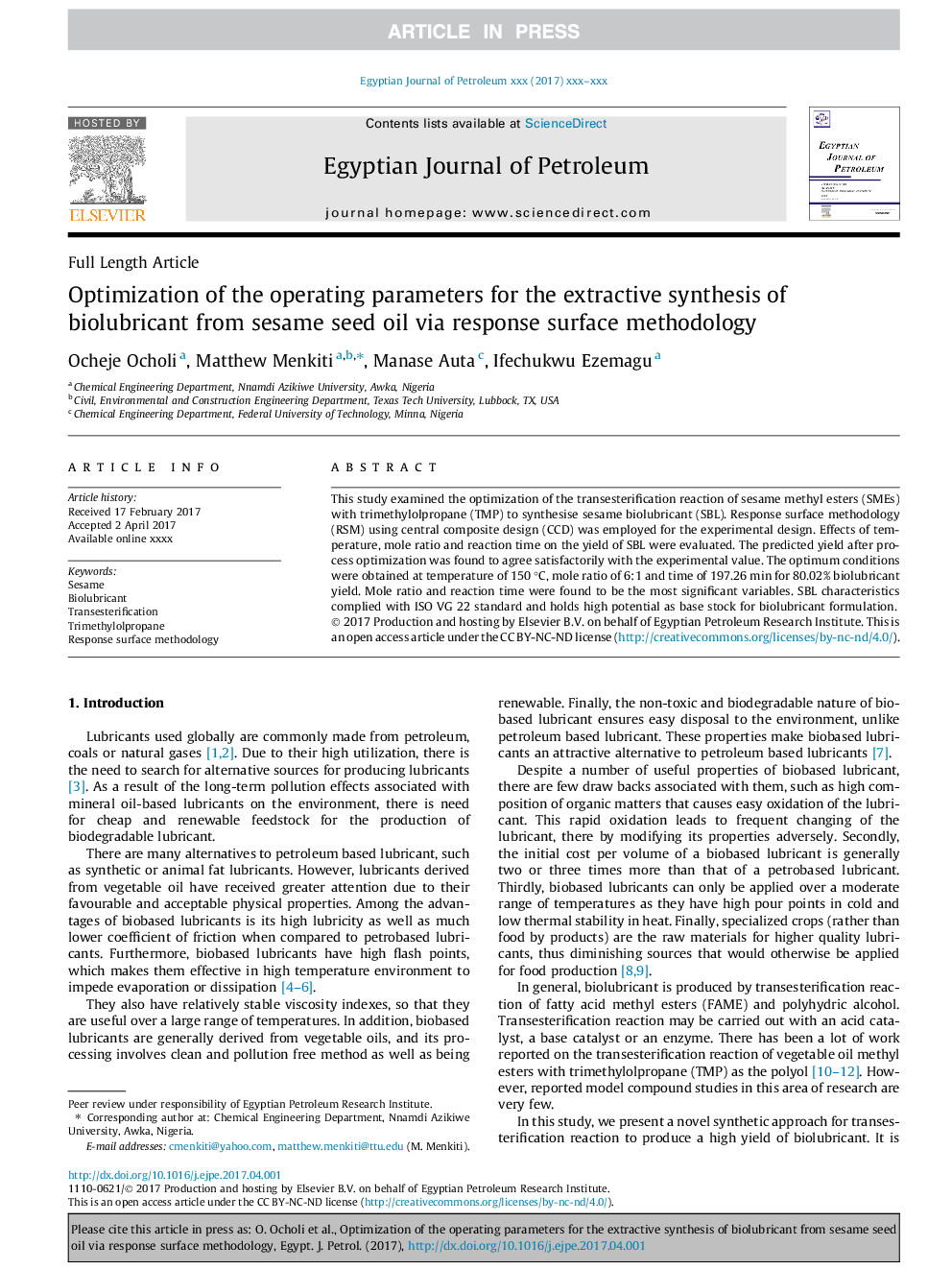| Article ID | Journal | Published Year | Pages | File Type |
|---|---|---|---|---|
| 10156375 | Egyptian Journal of Petroleum | 2018 | 11 Pages |
Abstract
This study examined the optimization of the transesterification reaction of sesame methyl esters (SMEs) with trimethylolpropane (TMP) to synthesise sesame biolubricant (SBL). Response surface methodology (RSM) using central composite design (CCD) was employed for the experimental design. Effects of temperature, mole ratio and reaction time on the yield of SBL were evaluated. The predicted yield after process optimization was found to agree satisfactorily with the experimental value. The optimum conditions were obtained at temperature of 150 °C, mole ratio of 6:1 and time of 197.26 min for 80.02% biolubricant yield. Mole ratio and reaction time were found to be the most significant variables. SBL characteristics complied with ISO VG 22 standard and holds high potential as base stock for biolubricant formulation.
Related Topics
Physical Sciences and Engineering
Energy
Energy (General)
Authors
Ocheje Ocholi, Matthew Menkiti, Manase Auta, Ifechukwu Ezemagu,
